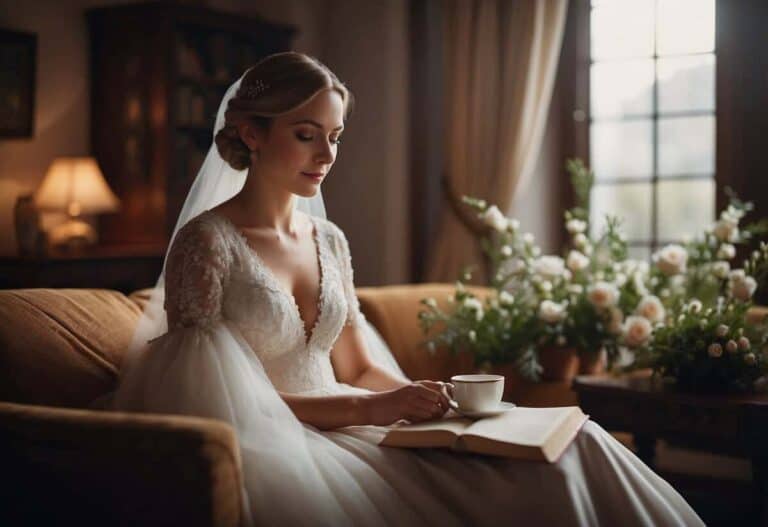Wedding DJ Tips: How to Keep Your Dance Floor Packed
Planning a wedding involves many details, and one element that can make or break the celebration is the music. Whether you hire a professional or decide to DIY, having the right wedding DJ can elevate your special day. The right music keeps the energy up, sets the mood, and ensures everyone has a great time.
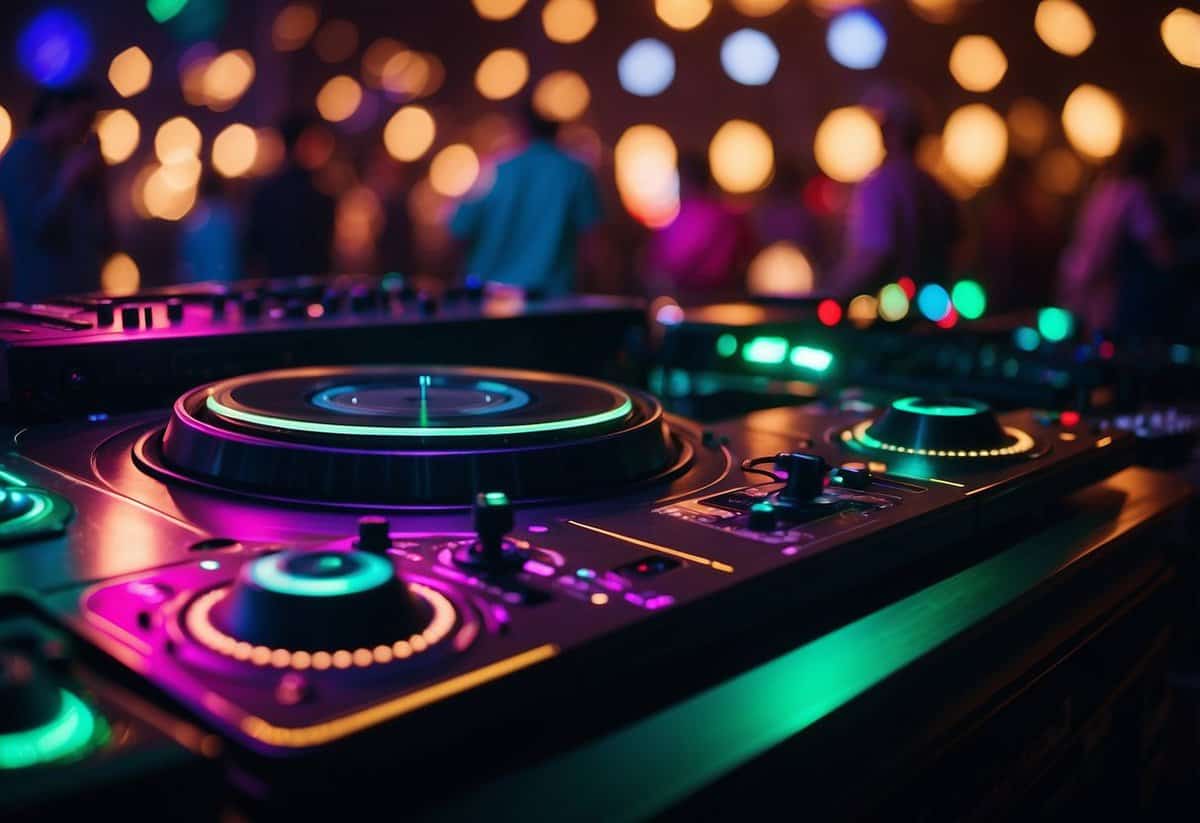
Choosing a wedding DJ means more than just finding someone to play songs. It involves considering the setup, song selection, and coordination with other parts of the event. By focusing on these key aspects, you can ensure that the dance floor is always lively and that guests leave with wonderful memories.
1) Plan a Playlist in Advance

Planning a playlist in advance is key to a great wedding celebration. Start by gathering a wide range of music. You need enough songs to cater to different tastes and keep the dance floor lively.
Share your playlist with your DJ ahead of time. This gives them the opportunity to prepare well and understand your preferences better.
Include a mix of genres to appeal to all your guests. From pop hits to classic love songs, diversity keeps everyone happy. Make sure you have special songs for key moments like the first dance or cake cutting.
2) Coordinate with the Venue
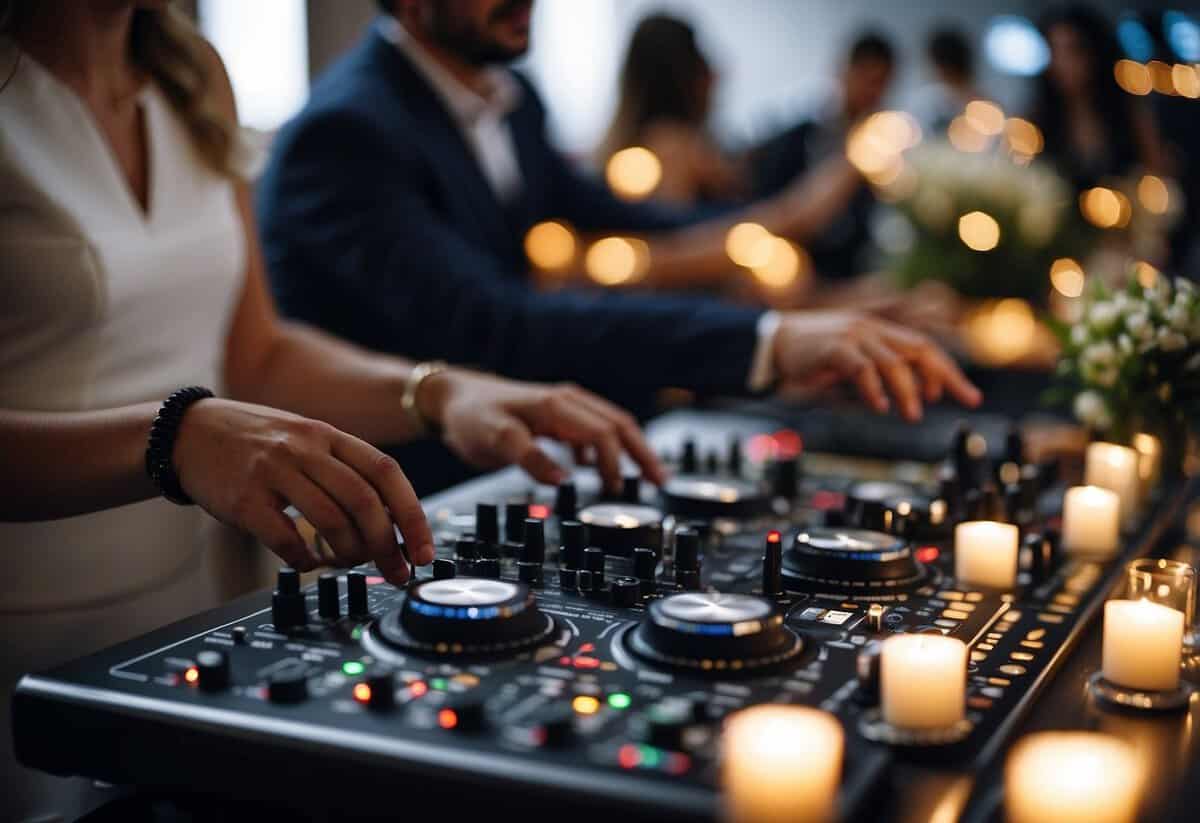
When planning your wedding, one key step is to coordinate with your DJ and the venue. This ensures that everyone is on the same page.
Start by visiting the venue with your DJ. This helps your DJ understand the space and figure out the best spots for equipment and lighting.
Make sure to discuss the venue’s rules and restrictions. Some places may have noise limits or specific times when music must stop.
Check if the venue provides any equipment. This can save you from renting extra gear. Discuss power sources and make sure they’re easily accessible for the DJ’s setup.
Lastly, share your event timeline with the venue and the DJ. This keeps things running smoothly and ensures your wedding day goes as planned.
3) Know Your Crowd
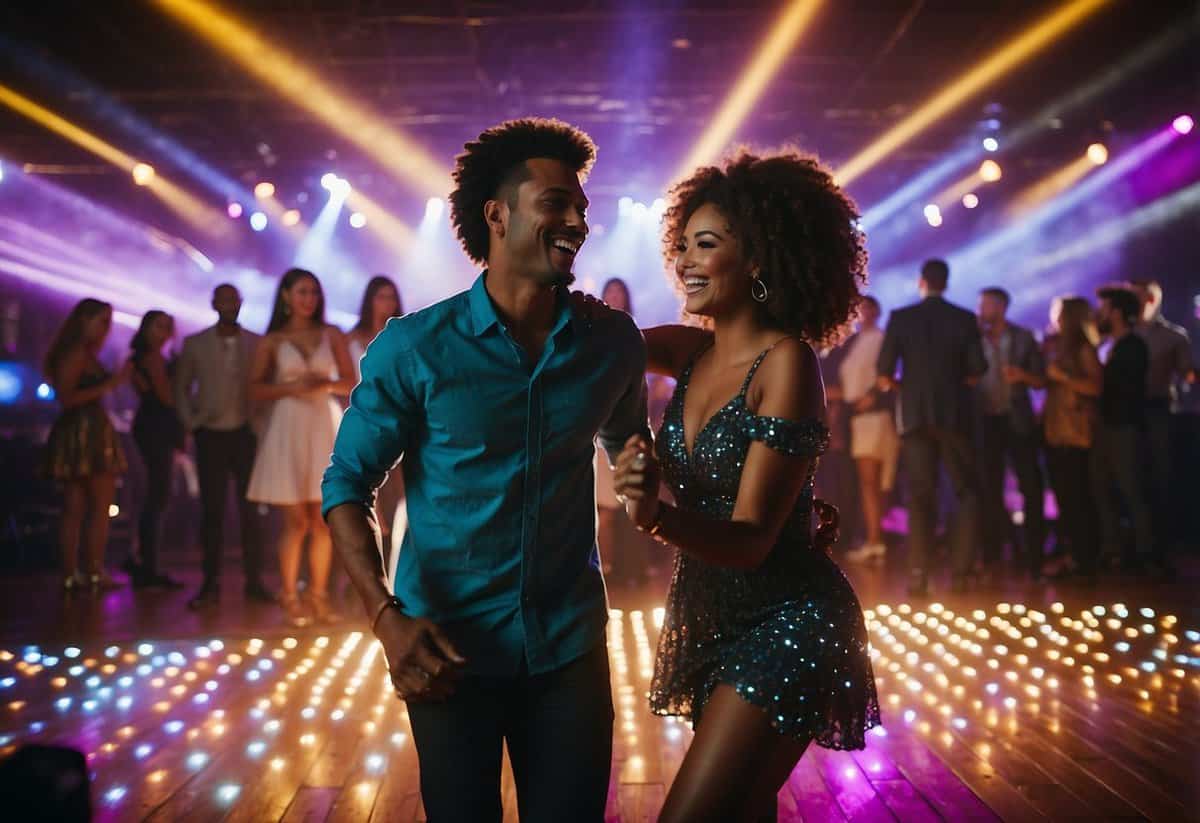
Understanding your audience is key to being a great wedding DJ.
Every crowd is different. What might work for one wedding might not work for another. Pay attention to the guests.
Talk with the couple beforehand. Find out their favorite songs and genres. Ask about their guests’ preferences, too.
Look out for reactions during the event. Are people dancing or just sitting? Use this information to adjust your playlist in real-time.
Consider the age range and cultural background of the guests. Play a variety of songs to make everyone happy.
Don’t forget to read the room. If a song isn’t resonating, be ready to switch it up quickly.
4) Create a Do-Not-Play List
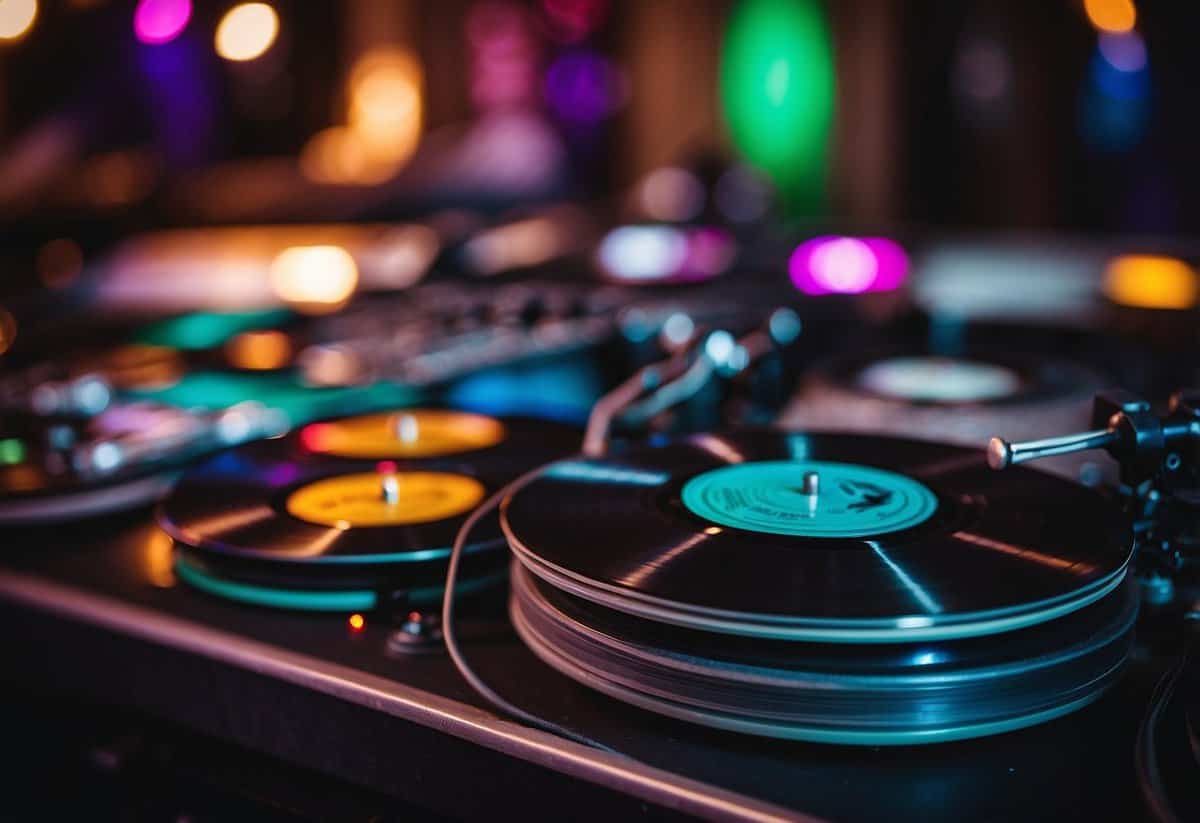
When planning your wedding, it’s important to think about the music you don’t want to hear. A Do-Not-Play List helps your DJ know which songs to avoid.
Make sure to include songs that have bad memories or that you simply dislike. It will help keep the atmosphere positive for everyone.
Communicate clearly with your DJ about this list. Ensuring they understand your preferences is key to having a great time. This step will prevent any unexpected interruptions and keep everyone dancing.
5) Have Backup Equipment
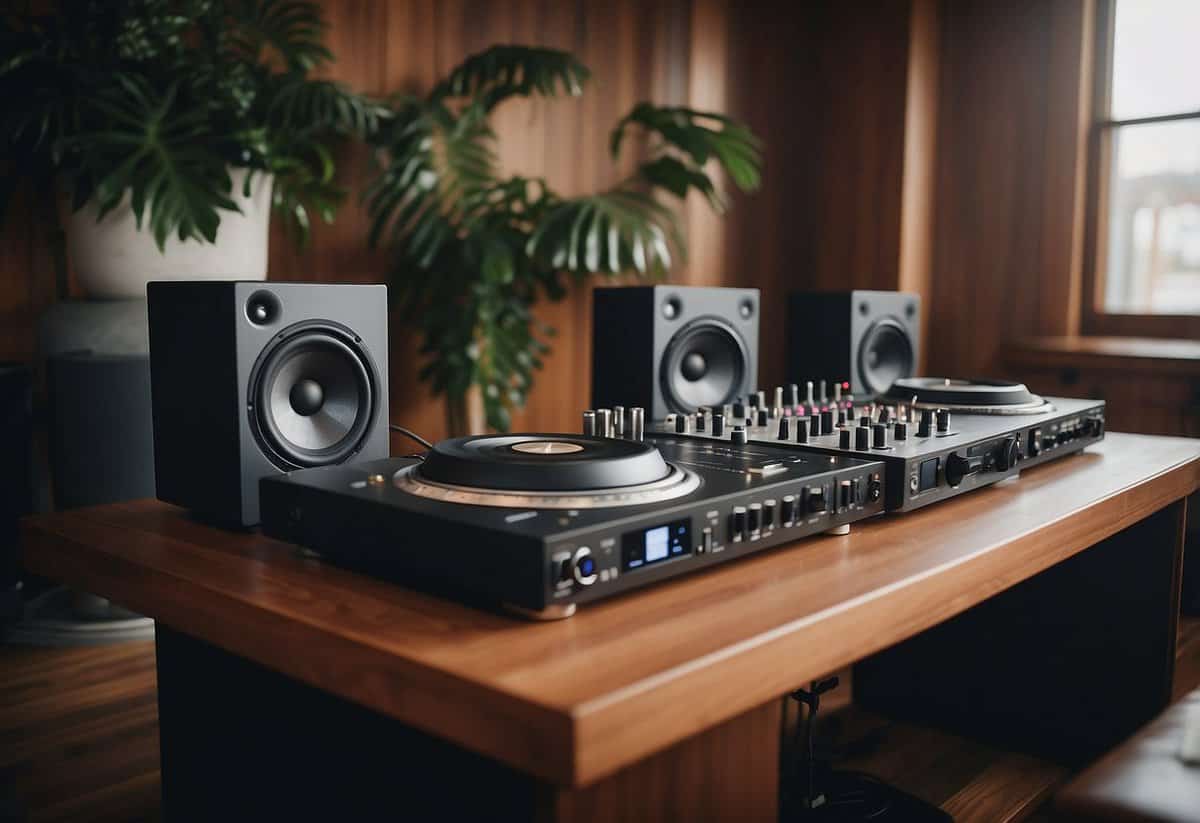
Having backup equipment is crucial for a wedding DJ. Things can go wrong unexpectedly. A piece of gear might fail at the worst possible time. If you have a backup, the party can keep going without a hitch.
Make sure you have extra cables, power sources, and even a second laptop. This way, you’re prepared for any glitches that might come up.
Keep your backup equipment easily accessible. It’s best to have it set up ready to use. This ensures you can switch quickly if something malfunctions.
Being prepared with backup equipment shows professionalism. It assures the couple and guests that the celebration will go smoothly.
6) Communicate with the Couple
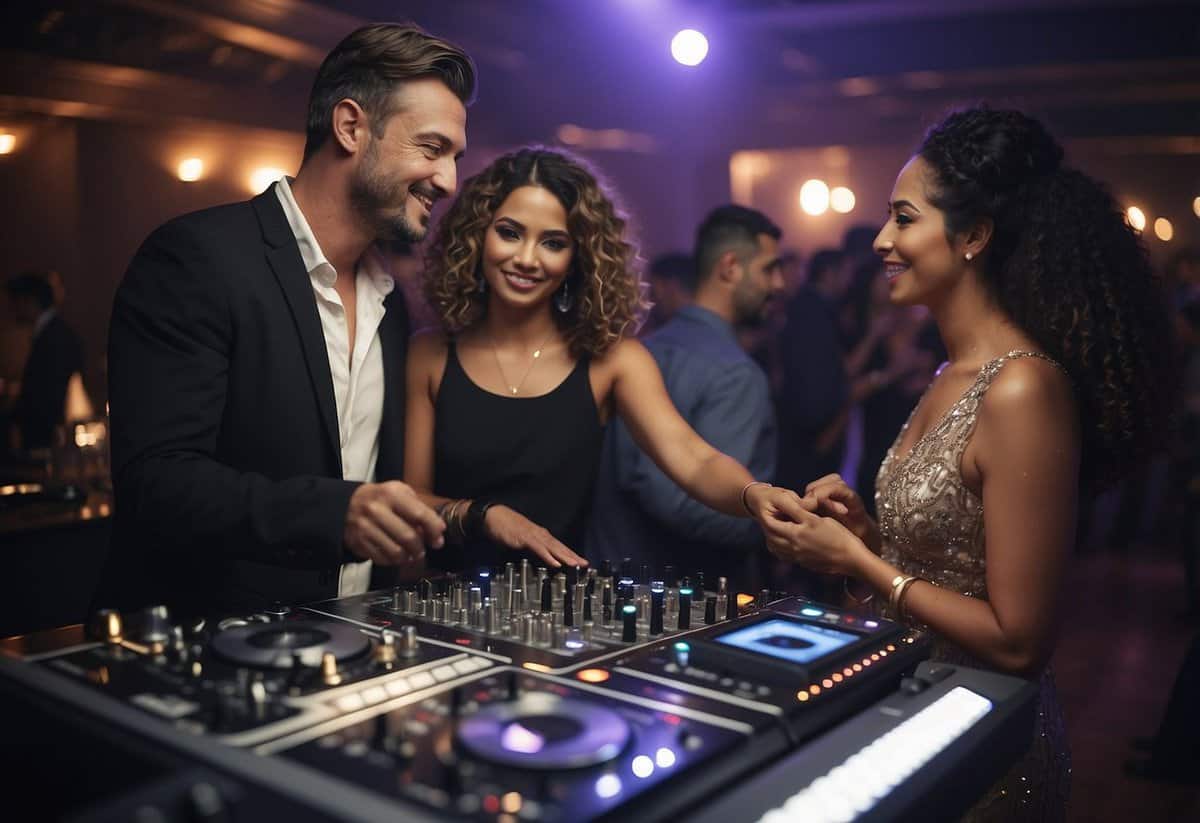
Talking with the couple before the wedding is very important. It helps you understand their music preferences and special requests.
Ask them about their favorite songs and any songs they don’t want played. This ensures that the music fits their taste.
Discuss the schedule of the event. Knowing the timeline helps you plan your music set better.
It’s also good to ask about any traditions or special moments that need specific songs. This makes these moments extra special.
Keeping in touch and being open to their feedback will make the day smoother for everyone.
7) Consider the Dinner Hour
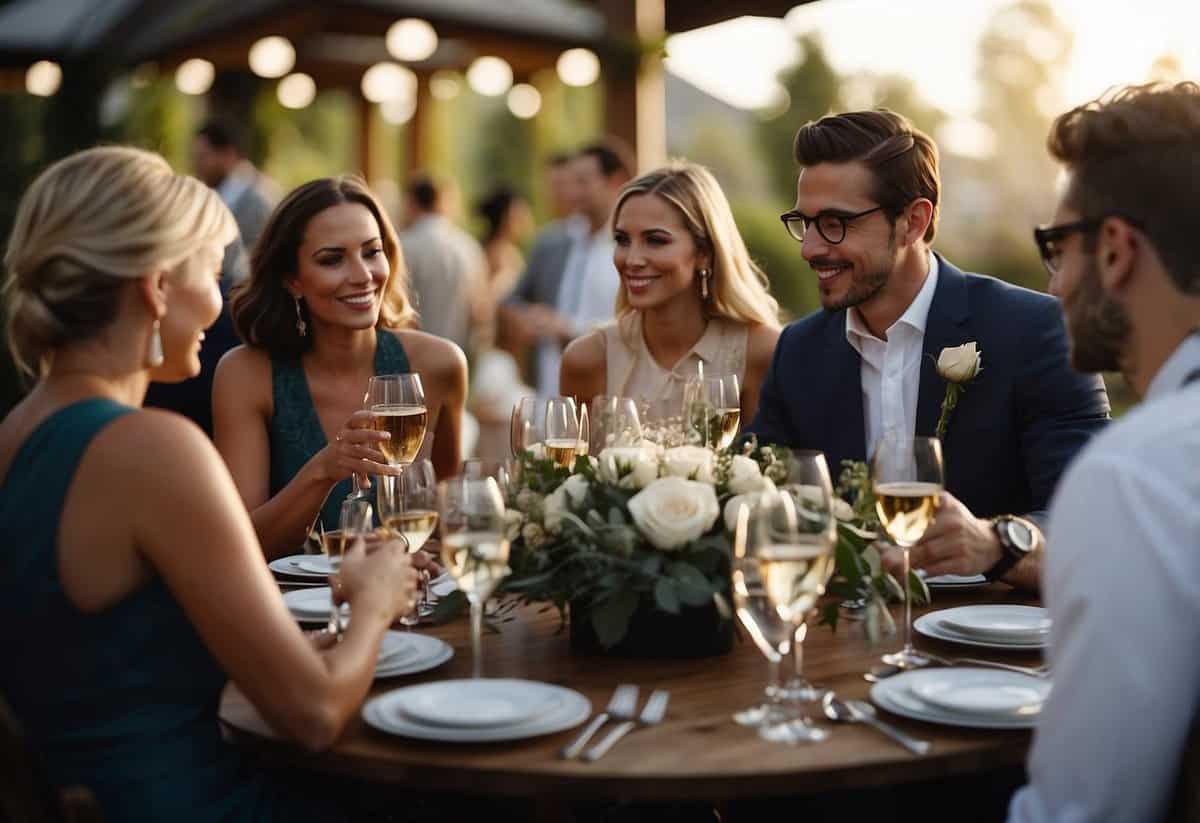
Think about the dinner hour as a key part of the evening. While guests are eating, choose softer, background music. This helps keep the atmosphere relaxed.
It’s also a good time to mix in some meaningful songs for the couple and their families. Keep the volume low enough so guests can converse comfortably.
Coordinate with the caterer to avoid playing louder music during important moments like speeches or toasts. This balance keeps the flow of the event smooth and enjoyable for everyone.
8) Mix Up the Genres
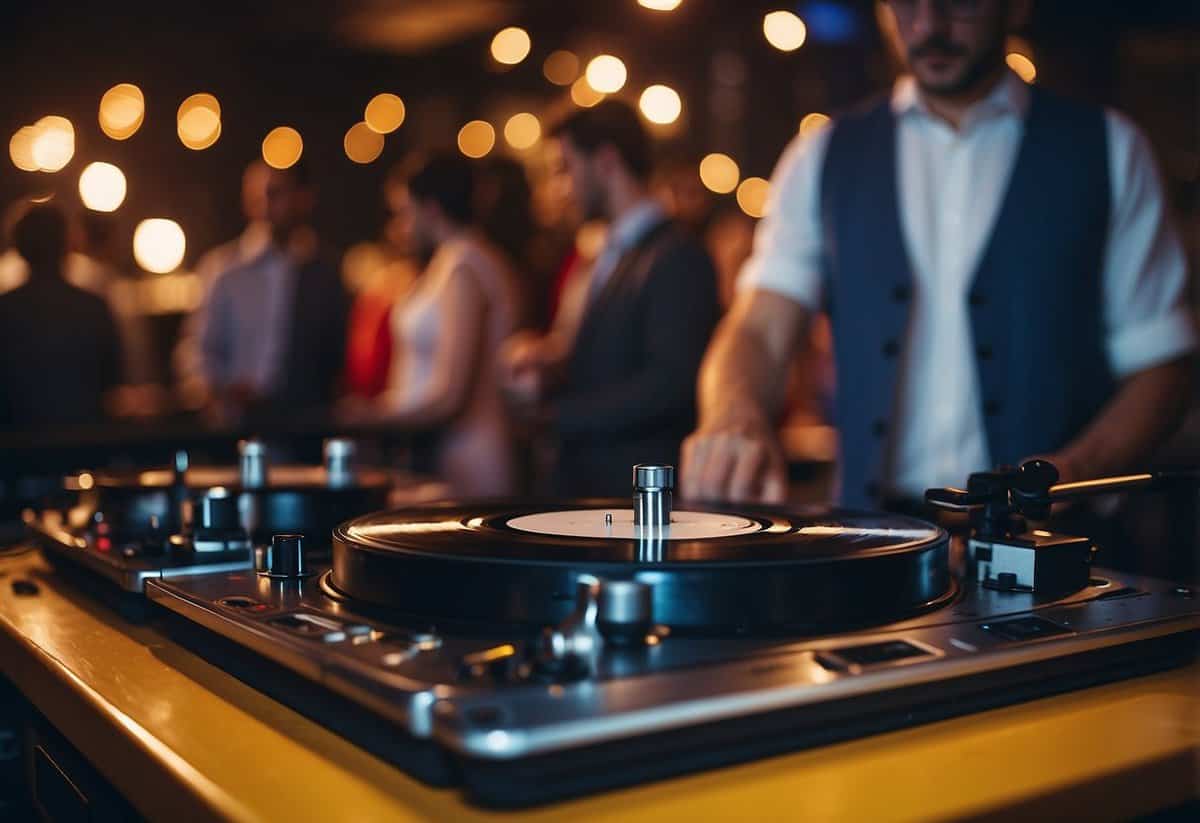
When DJing a wedding, it’s important to play a variety of music genres. This keeps all the guests happy. Everyone has different tastes, from the grandparents to the kids.
Switching genres helps keep the energy up. You might play a country song, then follow it with a pop hit. This surprises the audience and keeps them excited.
Create playlists with different genres. Have some pop, rock, hip-hop, and classics ready. This way, you can easily switch between them.
Mixing genres can also help break up sets. If you’ve been playing a lot of dance music, throw in a slow song. This gives everyone a chance to catch their breath.
Don’t forget to use effects to transition between genres. Filters and echoes can help blend tracks smoothly. It’s all about making sure the changes feel natural.
9) Pay Attention to Volume Levels
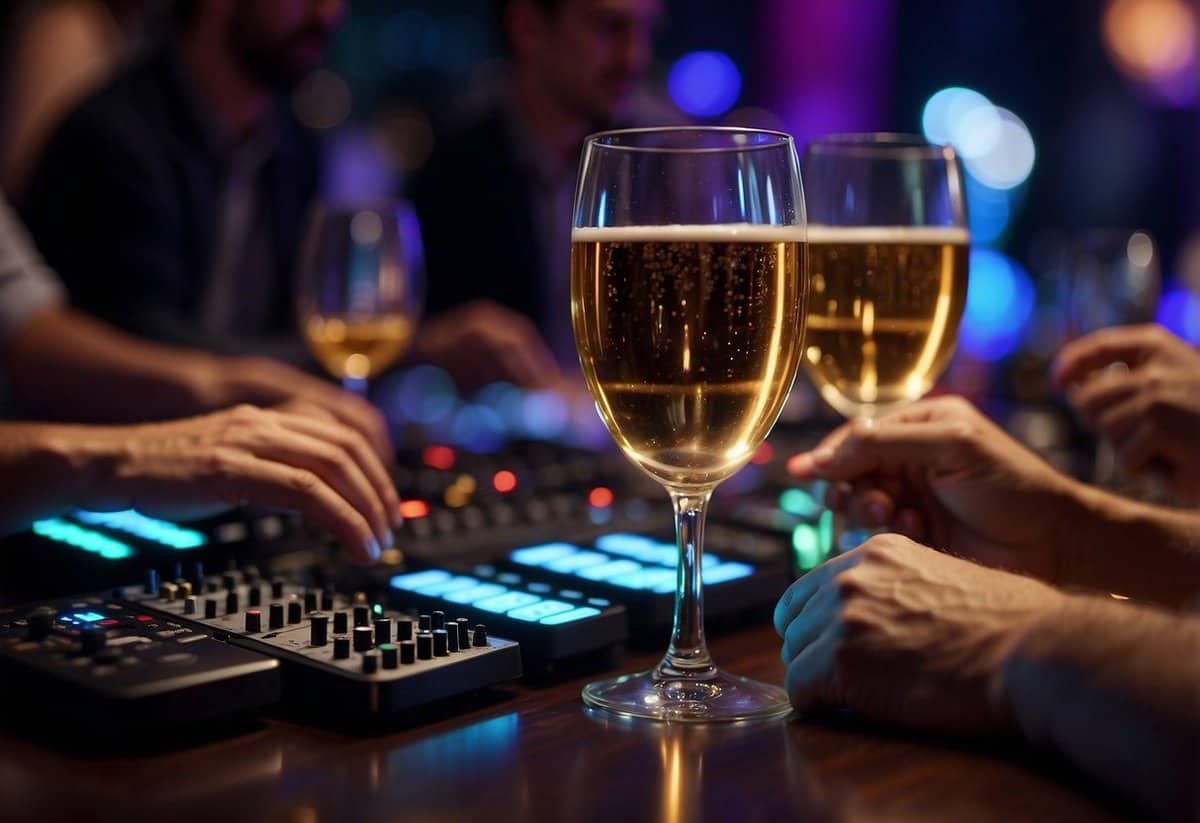
Getting the volume levels right is crucial for a great wedding experience. You need to make sure the music is loud enough for everyone to hear, but not so loud that it’s uncomfortable.
Consider the different parts of the wedding day. The music during the meal should be quieter so guests can talk easily. For the dance floor, you can turn it up a bit more.
Also, check with the venue about any rules they might have about noise levels. They may have neighbors close by or other events happening at the same time. Be respectful and make sure to follow their guidelines.
10) Take Song Requests
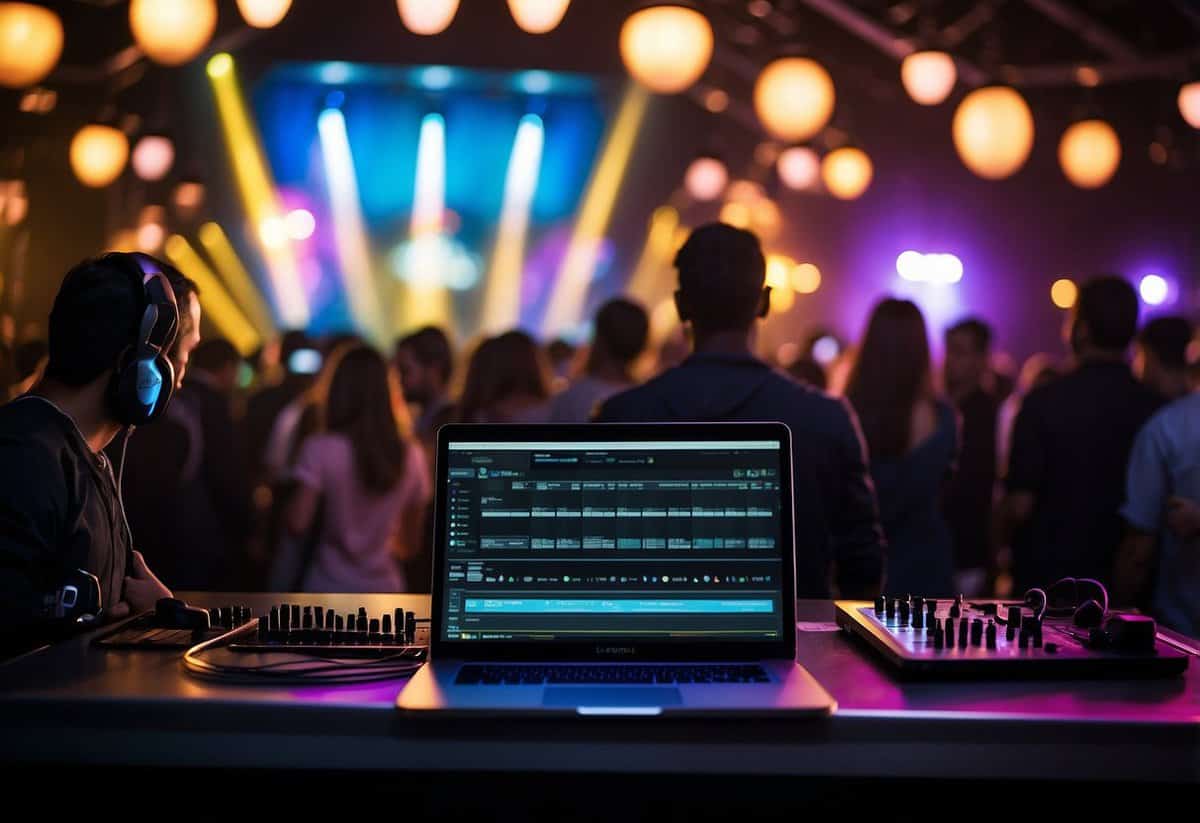
It’s a great idea to take song requests from your wedding guests.
Set up a clear system for gathering these requests. You can place a notepad or clipboard at your DJ booth.
Let your guests know that you will try to play their song but can’t guarantee it immediately.
Be open and flexible. Balance requests with the overall flow and mood of the event.
Respectfully handle any inappropriate song requests to keep the atmosphere fun and respectful for everyone.
Preparing for Your Wedding DJ Gig
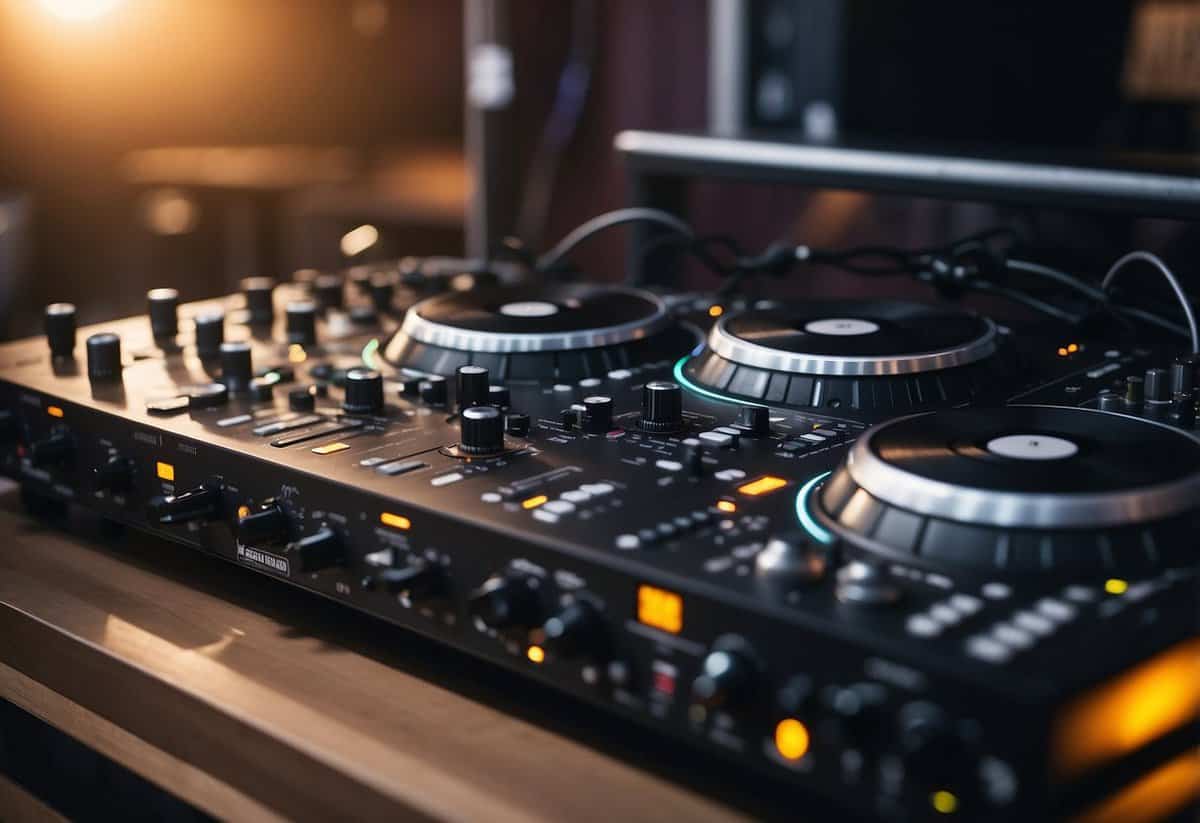
Before stepping up to the DJ booth for a wedding, it’s essential to understand the couple’s vision for their big day and to have a well-curated playlist. These preparations will ensure that the music resonates with the couple and their guests.
Understanding the Couple’s Vision
Meeting with the bride and groom is crucial. Discuss what music styles and songs are meaningful to them. Make note of any special requests, like songs for key moments such as the first dance, cake-cutting, and special dances. You should also understand any songs or genres they want to avoid.
Keep a checklist of these details. This could include:
- First dance song
- Reception entrance song
- Bouquet toss song
- Any do-not-play songs
Reviewing this list with the couple ensures you are on the same page and helps avoid any surprises on the wedding day.
Curating the Perfect Playlist
Curating a diverse and dynamic playlist is key. Include a mix of upbeat and slow songs, classics, and modern hits. This combination keeps guests of all ages entertained. Background music for dinner, energetic tracks for dancing, and special songs for important moments are all vital.
Consider the timing of your songs. Start with slower, background music during dinner, and gradually move to more dance-friendly tracks as the evening progresses. Ensure your music transitions smoothly to maintain the flow of the event.
Using an organized playlist app or a spreadsheet can help manage this. Mark songs by category (e.g., “Dinner Music,” “Dance Floor Hits”). This will make your job easier and the night more enjoyable for everyone.
Engaging the Crowd

Getting your wedding guests on the dance floor and keeping them there involves understanding their energy and using fun announcements to keep the excitement high. Ensure you are observant and interact well to make the celebration unforgettable.
Reading the Dance Floor
When DJing a wedding, it’s important to keep an eye on the dance floor. Notice who is dancing and who isn’t. Pay attention to the mood. If the energy is high, play fast-paced songs to keep them moving.
If the energy drops, mix in a popular hit to draw people back in. Watch body language. If people seem tired, consider a slow song to give them a break.
Also, be prepared with a variety of music genres. This ensures you can cater to different tastes. Survey the crowd occasionally to see what works best.
Using Interactive Announcements
Interactive announcements can make a big difference in keeping the wedding lively. Welcome the newlyweds and introduce important moments, like the first dance or cake cutting, with enthusiasm.
Encourage guests to participate in group dances, like the Cha-Cha Slide or the Macarena. This can get everyone moving. Plan fun, short announcements during breaks to keep guests engaged without interrupting the flow.
Ask guests to request songs or give shoutouts. This makes them feel involved and excited. Use a friendly tone to keep the atmosphere joyful and memorable.
Technical Setup
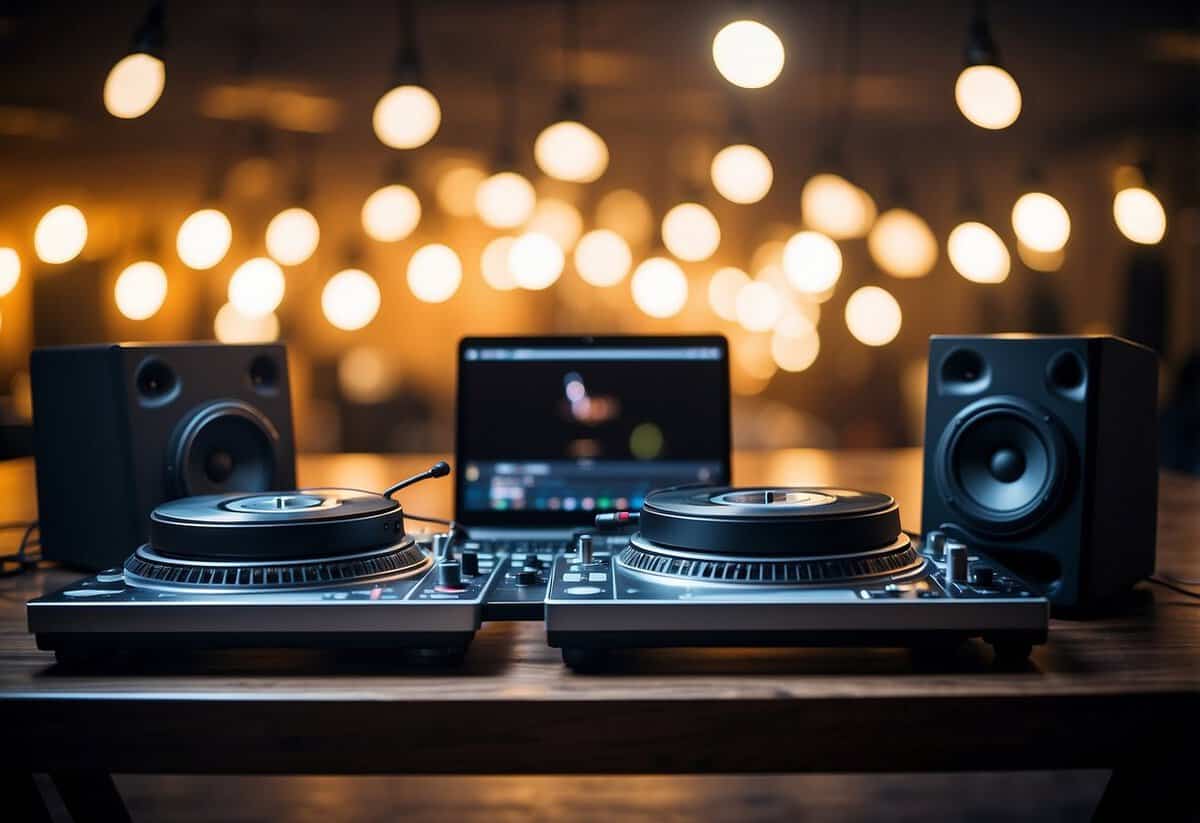
Setting up your DJ equipment correctly ensures a smooth wedding reception. Pay attention to sound checks and have the right gear.
Sound Check Best Practices
It’s important to check the sound system before guests arrive. Start with a quiet environment to test each piece of equipment. Adjust the volume on the speakers so they’re not too loud or too soft.
Walk around the venue while playing music to ensure good sound coverage. Run through your playlist briefly to test the audio levels of various songs. This avoids any surprises during key moments like the first dance or speeches.
Have a backup plan. Extra cables, batteries, and a second music source can save the day if something goes wrong.
Equipment Essentials
The essential gear for a wedding DJ includes a laptop, software, speakers, controller, and microphone. Make sure your laptop is reliable with enough storage for all your music.
High-quality speakers are crucial for clear sound. Position them carefully to cover the dance floor and seating area. A DJ controller will help you mix tracks smoothly.
Include one or two microphones for speeches and announcements. Wireless microphones are convenient and reduce clutter. Extra cables and adapters are also a must-have to connect everything properly.
Having the right equipment and preparation is key to a successful event. Keep these points in mind to ensure a hassle-free setup and a great experience for everyone.







